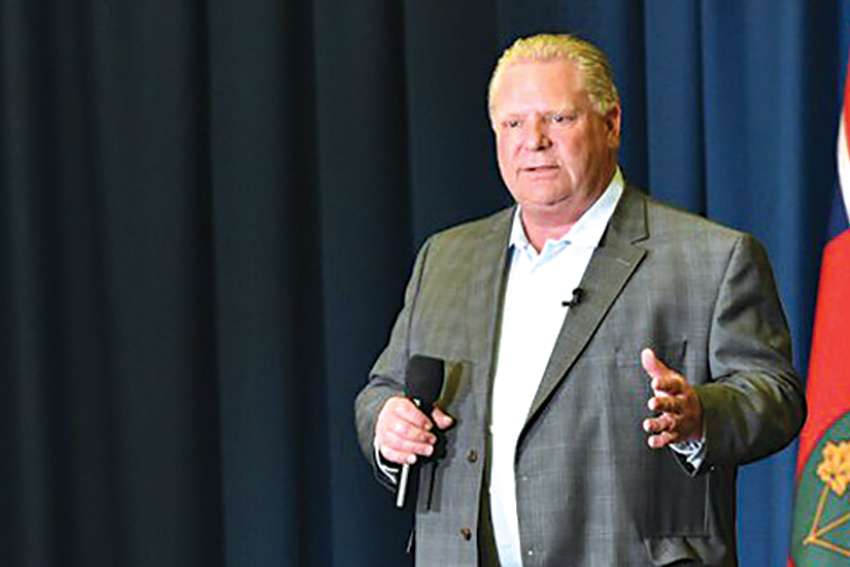“If we can implement a good percentage of it, if not all of it, we will be moving in the right direction,” Perry told The Catholic Register.
The CWL, Canada’s largest women’s organization, has been lobbying governments on human trafficking for more than a decade. One of the organization’s permanent standing committees monitors legislation and policy on human trafficking across the country.
While the new money to fight trafficking in Ontario sounds good, and the four-pronged focus on public education and awareness, policing, courts and victim services covers the ground, Perry is worried the government has not set any concrete goals or provided a means to measure success as its policy rolls out over the next five years.
“Until you have a goal that is achievable and some way to monitor that, there is no way to measure success,” Perry said. “I definitely would have expected them to set a framework for being able to monitor the success of the program.”
Premier Doug Ford declared his government is dedicated to the fight against traffickers.
“We must put an end to this disgusting industry and take immediate steps to keep our kids safe,” Ford said in a press release.
Last October police in York Region north of Toronto laid more than 300 charges after executing 34 search warrants in the Greater Toronto Area and Quebec, uncovering an organized crime ring and evidence that they forced dozens of women and underage girls to work in the sex trade.
At Covenant House, the Catholic shelter in Toronto for homeless youth that’s helped sex trafficking victims for 25 years, executive director Mark Aston credited the government for putting its money where its mouth is.
“The investment indicates a serious commitment on the part of the government,” Aston said.
Sr. Sue Wilson of the Congregation of St. Joseph’s Office for Systemic Justice and a member of the international Talitha Kum Network against human trafficking, founded and financed by Catholic religious orders, worried that the government focus is “far too narrow.” An exclusive focus on sex trafficking means that labour exploitation will remain invisible, Wilson said in an e-mail.
“Ontario’s new anti-human trafficking strategy is focused on the most commonly reported form of human trafficking in the province, which is sex trafficking,” Ministry of Children and Women’s Issues spokesperson Hanna Anderson told The Catholic Register. “However, our strategy will also support responses to labour trafficking, such as training, enhancements to funding for community-led supports and justice sector supports for survivors.”
Wilson did give credit to the governing Conservatives for entrusting substantial resources to Indigenous communities to launch their own education, awareness and victim support projects.
The Ontario Native Women’s Association praised the provincial strategy for making “investments that address the safety needs of Indigenous women and girls, which is critical to healthy communities.”
Wilson was critical of how much the Ontario strategy was focused on reactive, after-the-fact policing, prosecution and victim supports.
“This is another example of responding downstream,” Wilson said. “Among youth, key factors which create vulnerabilities to being trafficked are poverty and the social exclusion to which it contributes.”
Coherent, well-funded mental health and housing strategies that prevent youth homelessness would rob traffickers of their raw material, Wilson said.
“If the government were to give adequate funding to social protections (such as mental health services and housing options), we would create far fewer vulnerabilities to being trafficked,” she said.


